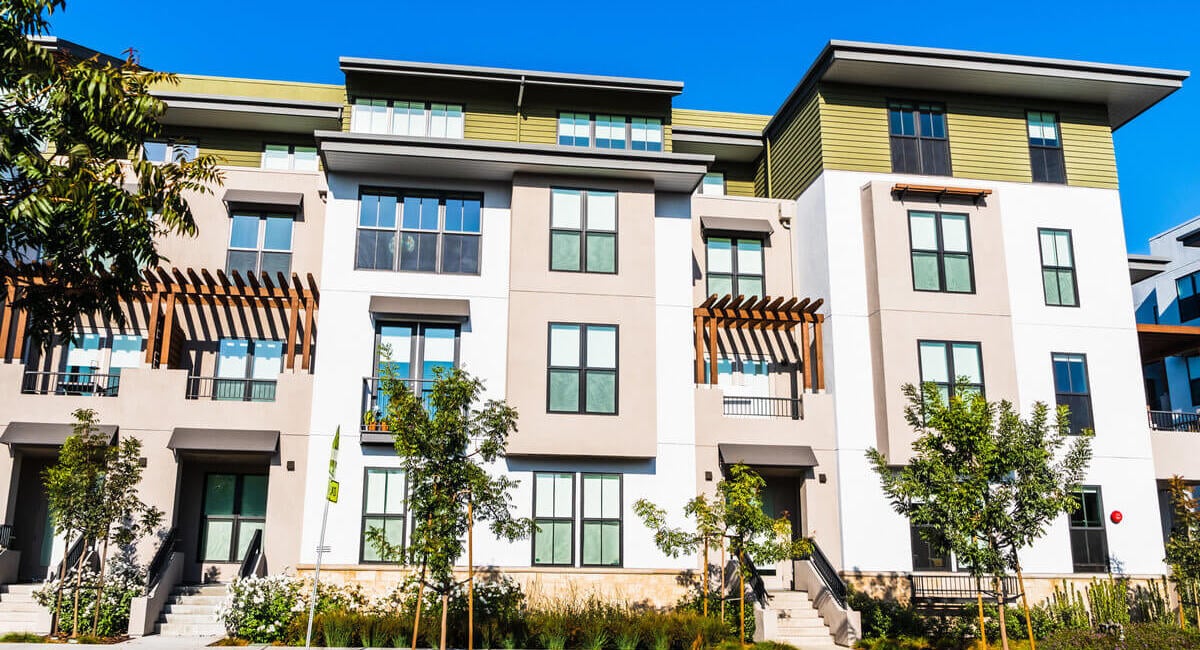If you’re in the market for a new home, you’ve probably seen properties that are in a strata complex. Living in a strata neighbourhood offers some advantages, but it also comes at a price. Before you purchase a property in a strata community, you should understand the role, structure, and bylaws of the strata corporation.

What Is the Role of a Strata Corporation?
The primary role of a Strata Corporation is to set and enforce rules for a neighbourhood. These rules are known as bylaws. The intention of the bylaws is to maintain the value of the properties in the neighbourhood, promote a sense of community, and uphold the interests of the residents.
The following are some areas that a Strata may regulate:
- Street parking
- Exterior decorations
- Siding and roof colors
- Landscaping
- Trash and recycling
- Home occupancy limits
- Pets
- Noise ordinances
- Short-term rental agreements
In many cases, Strata Corporation’s also create and care for shared spaces in a strata complex. For instance, they might manage a neighbourhood playground or pool. Your Strata could fund services like garbage pickup, snow plowing, and landscaping as well.

Strata Structure
Stratas are governed by a Strata Council, which is made up of elected homeowners in the neighbourhood. The Strata Council is run by a Strata Executive which typically consists of a President, Vice President, Secretary, and Treasurer, but some Stratas may have additional roles as well. In most cases, Strata Council Executive members are volunteers and are not paid. Many Strata Corporations also hire a property management company, which includes a property manager, to manage the strata which includes tasks such as paperwork, preparing for meetings, taking minutes, hiring contractors, etc.
The Strata Council is responsible for facilitating meetings, creating the budget, enforcing the bylaws and rules, and hires service providers for improvement projects. They can also establish committees, which general strata members can join, to manage specific tasks and functions.

Strata Fees
Stratas collect fees from all homeowners in the neighbourhood to pay the service providers and uphold the shared spaces. Most Stratas collect monthly fees, but some collect an annual fee instead.
Careful management of funds is one of the most important tasks for a Strata Council. The council should have a Contingency Reserve Fund (CRF) for significant or rare expenses. Sometimes, Stratas charge additional fees for special assessments, which are unexpected expenses outside the limits of the reserve fund. For example, a Strata may charge an extra fee to repair damage after a natural disaster.

Advantages of Living in a Strata Community
Living in a Strata community offers some unique advantages. The following are some of the key reasons why homeowners seek out Strata neighbourhoods:
Well-kept Neighbourhood
Stratas usually enforce rules about landscaping, decorations, garbage, noise, and other important matters. Living in a Strata neighbourhood gives you peace of mind that your neighbours will be held to a certain code of conduct. Not only can this improve your experience while living in your home, but it can also help to maintain the value of your property.
Amenities
The specific amenities offered by a Strata can vary from neighbourhood to neighbourhood, but most offer at least a few helpful services. Snow plowing, trash pickup, and landscaping are particularly valuable services for many homeowners. Shared spaces like a pool or playground can be appealing, too, especially if you have children.
Support With Neighbourhood Disputes
Your Strata can be a helpful source of support if you have a conflict with a neighbour. If your neighbour is violating one of the Strata’s rules, your Strata board will step in to keep the peace. For example, if your neighbour throws parties late into the night and your Strata has a noise ordinance, your Strata will contact them so that you don’t have to confront them directly.

Disadvantages of Living in a Strata Community
Although there are some valuable benefits to living in an Strata complex, there are also some drawbacks. The following are the biggest downsides to keep in mind before purchasing a strata home:
Fees
Strata fees generally range from $200 to $500 per month, but in some neighbourhoods, they can be as high as $1,000 or more. Some homeowners feel that the services they receive are worth the fees. Others feel that they’re paying too much and not receiving enough in return. Fees can increase over time, too, and are often reflective of the age of the home, the amenities the strata provides (for example those with pools generally have higher costs) and also upcoming repairs (special assessments) they may be saving for.
Restrictions
Your Strata’s rules and regulations can work in your favour when dealing with loud or disruptive neighbours. However, you and your property are also bound by the Strata bylaws. For instance, you might not be able to paint your home the colour you want or rent out a room to a tenant for extra income. Some homeowners get incredibly frustrated when they’re told what they can and can’t do with their own property.
Financial Risk
Failing to pay your dues to your Strata can be a significant financial risk. Your Strata corp can place a lien on your strata lot if you don’t pay the fees. In extreme cases, homeowners have even been foreclosed upon for non-payment.

Tips for Buying a Home in a Strata Community
If you’ve decided that living in a Strata complex is the right fit for you, you should still proceed with caution. Some Stratas are better-managed and offer more amenities than others, so it’s important to choose your neighbourhood carefully.

Do Your Research
Before making an offer on a home in a Strata community, do as much research on the association as you possibly can. Request their financial records, meeting minutes, and governing documents, and read through all of their rules and restrictions. Make sure they have reserve funds for significant expenses. If you have any questions or concerns about the Strata’s management, contact the association board directly.

Consider the Monthly Fees
When moving into a Strata community, you should be sure that the services you’ll receive are worth the fees. Consider how much services like snow plowing, a community pool, or trash pickup are worth to you. Also, research how frequently the Stata fees increase. You should be able to find this information in the association’s financial records. If the Strata seems to increase the fees significantly every few years, you may decide that the expense isn’t worth it.

Get Involved in the Community
Stratas can provide a great sense of community, and connecting with your neighbours and getting involved with the association is one of the best ways to create positive change. Attend all the Strata Council meetings, and consider serving on a committee if a project interests you. Making connections and advocating for what you feel is important will help you get the most out of your Strata community.
Living in a Strata complex is a gift for some families and a burden for others. While the amenities and services offered by a Strata can be very appealing, you also have to consider the fees and restrictions. If you’re thinking about purchasing a house in a Strata complex, be sure to research the strata corporation and documents thoroughly before making an offer. Working with an experiencing agent can greatly assist you with this task of researching strata properties. When working with my clients, I read through the strata documents with them and explain them thoroughly so there are no surprises later.
If you have any real estate questions, please don’t hesitate to reach out and I’d be happy to chat with you! ~Candy



